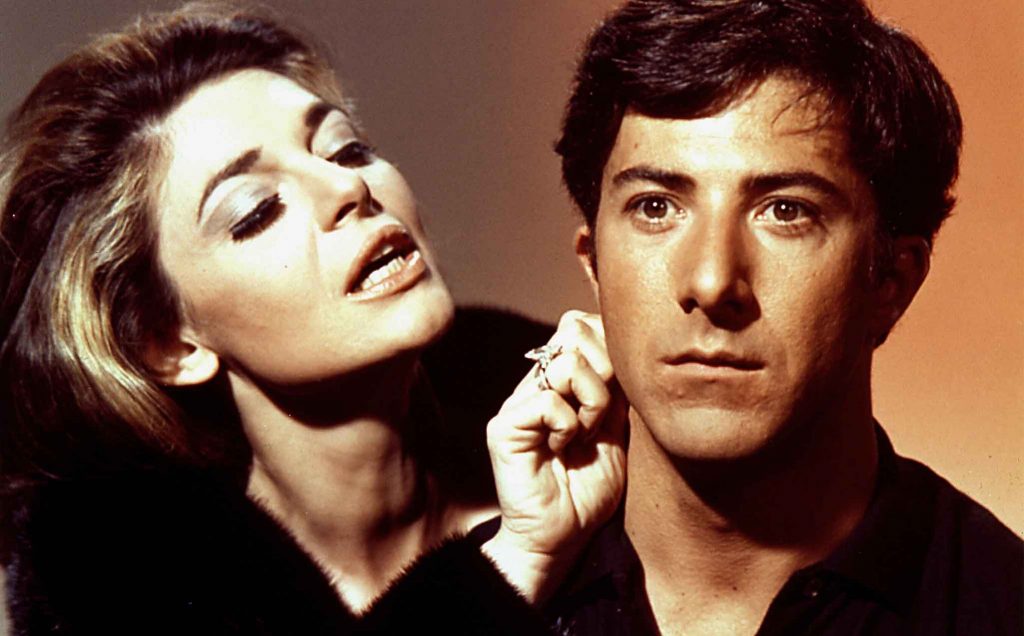- Emotional Manipulation, A Powerful But Complex Storytelling Tool (Part 1)
- Emotional Manipulation, A Powerful But Complex Storytelling Tool (Part 2)
- Emotional Manipulation, A Powerful But Complex Storytelling Tool (Part 3)
Emotional Manipulation, Shaping a Character’s Journey
Previously, we discussed how one of the most imperative building blocks for crafting great stories is the development of character. By extension, emotional manipulation, when utilized by fantastically developed protagonists and antagonists, is an equally imperative tool that a writer can wield to help define and shape character. The tactics of an emotional manipulator often reveal deep, finely woven truths about characters, both victim and perpetrator.
But emotional manipulation, as a storytelling device, can also be used beyond just establishing character. It can also be used to help shape a character’s arc or journey. When a character or protagonist falls prey to emotional manipulation or is manipulative themselves, it can often function as a catalyst for their larger arc. Let’s take a look at some examples from films that leverage specific emotionally manipulative tactics to help develop their protagonists’ arcs.
Generalization and Stereotyping
Oftentimes, victims of emotional abuse may be on the brunt end of generalizing or stereotypical statements put upon them by their abuser. Plainly defined, generalization and stereotyping involve the abuser weaponizing extreme terms or unchangeable facets of a person’s identity (gender expression, etc.) in order to demean them. This can frequently catapult a protagonist down the road of their character journey, often in a tragic sense.
One fantastic example of generalization and stereotyping can be found in the film Black Swan. Nina Sayers (Natalie Portman), often falls prey to her director Thomas Leroy (Vincent Cassel) throughout the film as he attempts to manipulate her psyche, thereby enhancing her performance in the ballet Swan Lake. One way he does this is by painting her as overly virginal and naïve. In doing so, Thomas hopes to guilt her into expanding the confines of her sexuality, subsequently allowing her seductiveness to bleed over into her performance. His generalization about Nina’s naivete ultimately sends her down a dark road of fraught sexual experimentation and assault, which in turn contributes to her descent into psychosis.
This trend continues throughout the film when Lily (Mila Kunis), another ballerina in the company, stereotypes Nina as a fragile, sexually repressed pupil who has the hots for her teacher. She even guilts Nina into substance abuse by way of her stereotyping. Similarly, this also contributes to Nina’s lapse from reality. As Nina grows more and more desperate to prove both Lily and Thomas wrong about their reductive presumptions, she becomes more careless about the consequences of redefining herself against these generalizations.

Lily (Mila Kunis) in Black Swan. Photo courtesy of Searchlight Pictures
Both of these manipulation tactics ultimately serve as the catalyst for Nina’s character journey and her tragic demise. Through these emotionally manipulative tactics, we learn what Nina does not want to be seen as, which gives weight to her goal of redefining expectations about herself. But without these two characters’ emotional machinations, Nina, as a protagonist, would not have the fuel necessary to launch her into her character-defining, tragic arc.
Ignoring Others, and Changing Subjects
Another well-defined tool of emotional manipulators is to shut out or altogether ignore their victim. Changing the subject and redefining the conversation makes master manipulators out of even the most charming of characters. However, in the same way that an impact character can orchestrate a profound shift in a protagonist, the power dynamics that come into play with manipulators who ignore their victims can often establish great character arcs.
Consider the dynamic between Mrs. Robinson (Anne Bancroft) and Benjamin (Dustin Hoffman) in The Graduate. After Mrs. Robinson invites Benjamin to her home, he repeatedly tries to excuse himself and return back to his parent’s house. However, Mrs. Robinson ignores him, and often changes the subject to her personal history, or offers him a drink in turn. Her use of these tactics keeps Benjamin in her house long enough for her true machinations to come to light: namely, pursuing her attraction to Benjamin. What’s more, this methodology reveals a compelling power dynamic that slowly shifts over the course of the film.
Eventually, as Mrs. Robinson and Benjamin’s affair continues, Benjamin finds himself on much more equal footing with her, desperate to regain control over his own life and tame his sense of aimlessness. However, without Mrs. Robinson’s manipulations kickstarting this journey, the stakes and dynamics that inform this relationship and arc would not be properly established. Without setting up the initial power inequity between these two characters through Mrs. Robinson’s manipulative tactics, Benjamin wouldn’t have as clearly defined arc.

Mrs. Robinson (Anne Bancroft) & Benjamin Braddock (Dustin Hoffmann) in The Graduate. Photo courtesy of Embassy Pictures
What’s perhaps most compelling about the way that ignoring others and changing the subject are used in The Graduate is the way in which they fall out of the story as tactics of emotional manipulation. By the time Benjamin tries to expose his affair with Mrs. Robinson to her daughter Elaine (Katharine Ross), Mrs. Robinson is no longer able to ignore Benjamin. In the buildup to this sequence, both characters try to force the other’s hand regarding the secret of their relationship, to the point where this tactic is no longer available to either of them. This helps punctuate Benjamin’s character arc and reflects the shift in power dynamics between the two characters. Mrs. Robinson is no longer in control, Benjamin is.
Moving Goal Posts & Denial
Perhaps the most narratively compelling way to define character arc through emotional manipulation is to see the protagonist adopt the practices of those who have manipulated them. This not only highlights character flaws, and the struggle to overcome those flaws, but also helps punctuate the last gasps of a character arc when a character’s decisions are the most impactful thematically. Protagonists who were victims of emotional manipulation only to become manipulators themselves can prove a powerful, resonant link between this storytelling device and crafting singular character arcs.
One such example of this idea can be found in a film with one of the most memorable, manipulative characters in the cultural canon: Miranda Priestly (Meryl Streep). In The Devil Wears Prada, aspiring journalist Andy Sachs (Anne Hathaway) is consistently manipulated by her boss Miranda, who moves the goalposts of success constantly throughout the film. Even when Andy has technically done her job to the best of her ability, Miranda is never satisfied. Miranda continuously redefines the rules of what she constitutes as a “job well done,” forcing Andy back on her heels and struggling to keep up.

Andy Sachs (Anne Hathaway) & Meryl Streep (Miranda Priestly) in The Devil Wears Prada. Photo courtesy of Twentieth Century Fox
However, by the time Andy has mastered the art of adjusting to these shifting goalposts, it becomes clear that her triumphs in that regard are in no small part due to her adoption of some of Miranda’s less-than-desirable tendencies. This comes to a head towards the end of the film when Miranda insists that Andy take the place of Emily (Emily Blunt) on her trip to Paris for fashion week.
Andy eventually justifies this decision to Emily by claiming she had no choice but to accept the offer. Though previously, Andy claimed she had no interest in going to Paris or advancing her career within Runway Magazine, she redefines the rules and goalposts for herself and for Emily by arguing that she was just as much a victim as Emily was. This tool of deflection, subsequently denying her own role in the proceedings, is something Andy has picked up directly from Miranda. Miranda sees herself as above blame, as does Andy in this regard. Andy’s denial of her guilt and her shift of the rules demonstrates just how much she’s become like Miranda, which ultimately leads to the culmination of her character arc.
Defining character in film and television is imperative, but beyond that, crafting singular and specific arcs is especially important for generating impact and thematic resonance. However, within the limited confines of an episode or feature film, it’s essential to create definitive character beats that punctuate a protagonist’s arc in order to create satisfying narratives. Creating emotionally manipulative characters, and characters whose arcs are defined by the actions of these characters, can not only generate extremely specific power dynamics but also serve as the catalyst for compelling character arcs. These arcs and the device of emotionally manipulative storytelling also motivate and inform theme. And ultimately, without a theme, features, and series can often feel rote or poorly defined.

